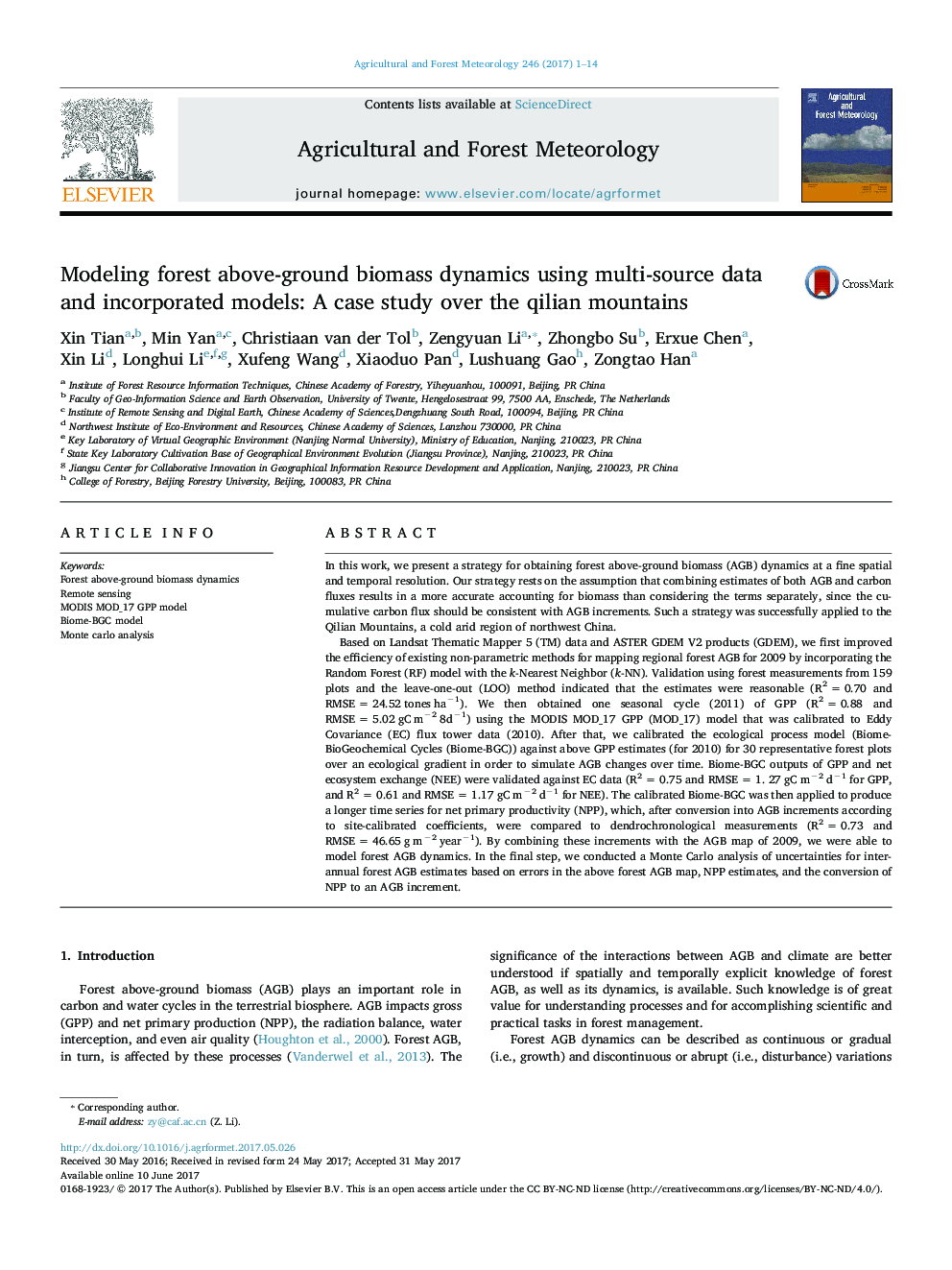| کد مقاله | کد نشریه | سال انتشار | مقاله انگلیسی | نسخه تمام متن |
|---|---|---|---|---|
| 6457682 | 1420855 | 2017 | 14 صفحه PDF | دانلود رایگان |
- The modeling of forest above-ground biomass (AGB) dynamics was proposed.
- The efficiency of non-parametric methods for estimating forest AGB was improved.
- Two ecological models were incorporated to simulate forest carbon fluxes.
- The modeled forest AGB dynamics can capture detailed processes' characteristics.
- Uncertainties in the interannual forest AGB dynamics were analyzed by the Monte Carlo method.
In this work, we present a strategy for obtaining forest above-ground biomass (AGB) dynamics at a fine spatial and temporal resolution. Our strategy rests on the assumption that combining estimates of both AGB and carbon fluxes results in a more accurate accounting for biomass than considering the terms separately, since the cumulative carbon flux should be consistent with AGB increments. Such a strategy was successfully applied to the Qilian Mountains, a cold arid region of northwest China.Based on Landsat Thematic Mapper 5 (TM) data and ASTER GDEM V2 products (GDEM), we first improved the efficiency of existing non-parametric methods for mapping regional forest AGB for 2009 by incorporating the Random Forest (RF) model with the k-Nearest Neighbor (k-NN). Validation using forest measurements from 159 plots and the leave-one-out (LOO) method indicated that the estimates were reasonable (R2 = 0.70 and RMSE = 24.52 tones haâ1). We then obtained one seasonal cycle (2011) of GPP (R2 = 0.88 and RMSE = 5.02 gC mâ2 8dâ1) using the MODIS MOD_17 GPP (MOD_17) model that was calibrated to Eddy Covariance (EC) flux tower data (2010). After that, we calibrated the ecological process model (Biome-BioGeochemical Cycles (Biome-BGC)) against above GPP estimates (for 2010) for 30 representative forest plots over an ecological gradient in order to simulate AGB changes over time. Biome-BGC outputs of GPP and net ecosystem exchange (NEE) were validated against EC data (R2 = 0.75 and RMSE = 1. 27 gC mâ2 dâ1 for GPP, and R2 = 0.61 and RMSE = 1.17 gC mâ2 dâ1 for NEE). The calibrated Biome-BGC was then applied to produce a longer time series for net primary productivity (NPP), which, after conversion into AGB increments according to site-calibrated coefficients, were compared to dendrochronological measurements (R2 = 0.73 and RMSE = 46.65 g mâ2 yearâ1). By combining these increments with the AGB map of 2009, we were able to model forest AGB dynamics. In the final step, we conducted a Monte Carlo analysis of uncertainties for interannual forest AGB estimates based on errors in the above forest AGB map, NPP estimates, and the conversion of NPP to an AGB increment.
147
Journal: Agricultural and Forest Meteorology - Volume 246, 15 November 2017, Pages 1-14
